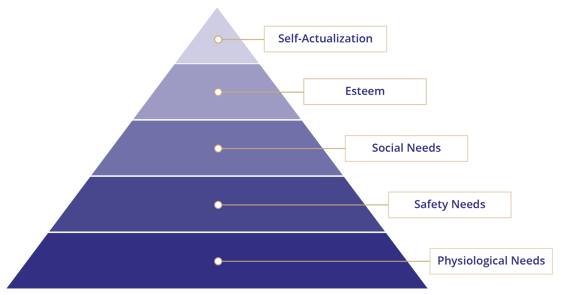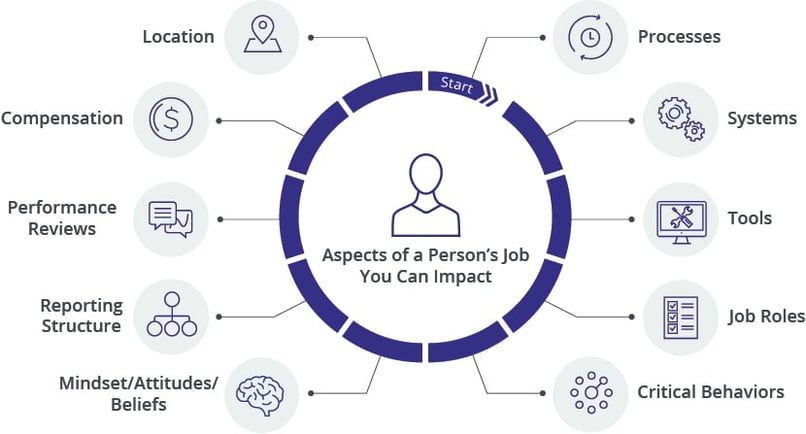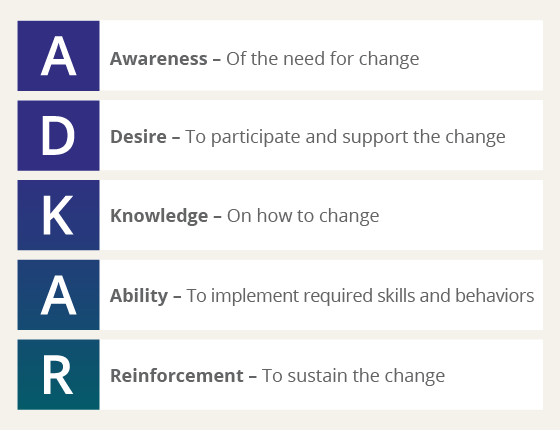Is Your Organization Registering a False Positive on Change Resilience?

3 Mins
Updated: March 17, 2024
Published: August 9, 2022

After numerous conversations with executives and senior change leads, we have learned that many organizations consider their staff to be change resilient due to their successful transition to the work-from-home model as a result of the COVID-19 crisis. The concern is that this sense of resiliency may give way for executives to feel they have a license to introduce organizational change without executing intentional change plans. To assume that organizations have reached a heightened level of change resiliency because of their experiences with COVID-19 is fraught with risk.
Learn how to quickly assess impacts from change on employees
with our free Yesterday-Tomorrow Exercise.
3 Reasons Why Adoption of a Work-at-Home Model is Not Change Resilience
Let’s reflect on the situation to understand the differences between individuals adopting a new work modality due to a global pandemic versus embracing and adopting the changes that come with an organizational change initiative.
1. Awareness was obvious and urgent
When you make an announcement related to an organizational project or change, the first responsibility of the primary sponsor leading the initiative is drive Awareness of the need for change. The sponsor should provide pointed messaging that answers for impacted groups the questions, “Why?” “Why now?” and “What is the risk of not changing?”
Awareness of the need for change due to the pandemic came to us from external “sponsors” in the form of world leaders and healthcare professionals. An executive would not have spent time carefully crafting a communication about the need to work virtually during COVID-19—the reasons were obvious and the need to change was directly related to an external emergency.
2. Desire was intrinsically motivated
The second step in the individual change journey is one of Desire. This is where employees get to the stage of really engaging in the change and leaning in, as opposed to resisting or just going along for the ride with minimum viable engagement or what we refer to as MVE. With MVE, employees exhibit presenteeism—a problematic mode of appearing engaged but not really helping to drive the desired result. Desire stems from an individual understanding “What’s in it for me” when it comes to a change. In the COVID-19 world, Desire to work from home had nothing to do with individual or organizational change theory. The reason why employees easily adopted remote work is not found in any of the myriad books on change management.
To understand why, we must go further back and to something far more basic: Maslow’s Hierarchy of Needs. Fundamentally, when it comes to personal health and safety, Desire comes from within and not from one’s immediate supervisor explaining changes to a job role or processes. Correlating the rapid, “feet first” adoption to working from home we experienced with individuals being ready to adopt other new processes, tools, reporting structures, compensation models, etc. is simply incorrect.

3. The way employees do their jobs didn’t change
For most people, remote work represented the same duties and working with the same team members they had in the office environment. This combination of Awareness and Desire from external sources enabled rapid adoption of the work-from-home modality. For many, work became a welcome distraction or a refuge from the craziness associated with the pandemic itself. When asked how they were dealing with this, employees commonly responded, “It is what it is.” This hardly indicates change resilience.
An executive could have legitimate reasons for believing their organization does not need to adopt an intentional and structured approach to introducing change. But success related to employees adapting to work-from-home modalities during the COVID-19 pandemic is not one of them. We know from thousands of discussions and twenty years of research that getting sufficient time and attention from executive sponsors to support change initiatives is the single biggest challenge change practitioners face.
Gauging True Change Resiliency
How do you test for resiliency? Resiliency is built up over time through individuals progressing through the change process successfully. To understand the potential resiliency of a given group that will be impacted by a new change, we must look at past changes with that group and consider the job aspects that actually changed. As noted in the pandemic-related, work-at-home change, the only job aspect that changed for the majority of people was their job location, and that location was familiar to them. Fundamentally, however, there are 10 unique aspects to a job role—ranging from location and process to tools and reporting.

To get a barometer reading on how other organizational changes will be accepted, it is critical to understand which job aspects will change. You must also understand how the impacted groups have adopted changes in the past, and especially those changes that impacted similar job aspects. History is the greatest indicator of the future in the case of change adoption.
In other words, you should not rely on a recent change success until you understand at a granular level the true drivers for that success, as well as the true change that was implemented.
Educate Your Primary Sponsors of Change
The ongoing fear is that this perceived change resiliency will feed the self-fulfilling prophecy that executives don’t need to spend time actively and visibly supporting change initiatives. This could prove dangerous as they introduce the complex changes necessary for their organizations to thrive today and in the future. As a change practitioner, you can help avoid problems by educating your executives on the true nature of change resilience and how to develop it over time through effective change management.




